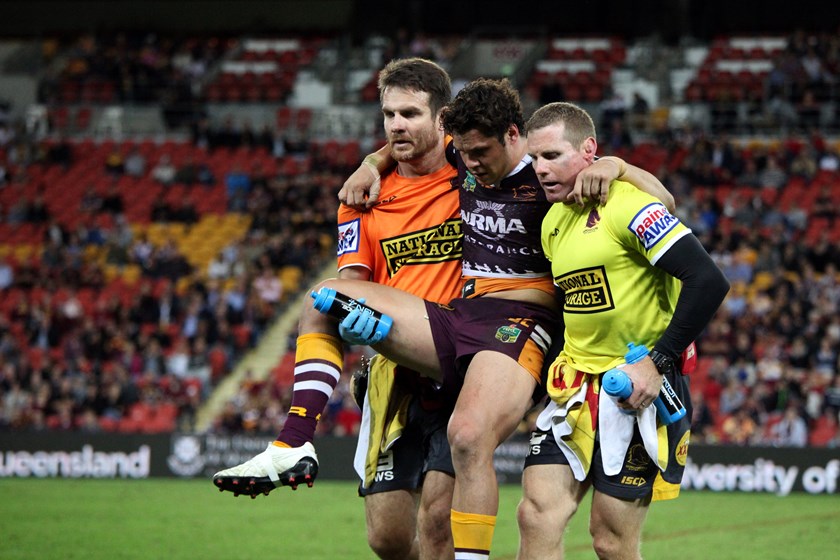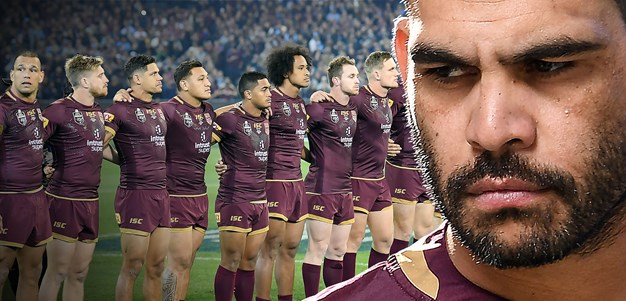
They are three letters which bring despair and disaster to any footballer - ACL.
It's the common term for the anterior cruciate ligament, which runs through the middle of the knee providing rotational stability to the joint. If it is torn or damaged it usually means a knee reconstruction, followed by six to nine months rehabilitation.
The injury is devastating at any time, but it is one of those soft tissue ones that is particularly prevalent in the opening 10 rounds of the NRL season.
Cast your minds back to the 2018 Telstra Premiership and Newcastle’s Tautau Moga (round four), Manly’s Curtis Sironen (round four) and Lachlan Croker (round six) were gone for the year with ACL damage.
At the start of the 2017 season, South Sydney’s Greg Inglis (round one), Cowboys prop Matt Scott (round two) and Titans forward Ryan Simpkins (round 10) all suffered ACL tears.
From the NRL's Injury Surveillance Report there were 12 ACL injuries in first grade in 2018 – five of those were in the opening eight rounds.
In NRL, Intrust Super Premiership, and trial games up until round 10 last year, there were eight hamstring along with five other leg muscle strains. There was also nine medial ligament, two posterior cruciate ligament and five other knee cartilage strains.

So the work a player does in the pre-season, or lack of work in some cases, is vital in trying to prevent ACLs.
Of course there are other factors that can influence the likelihood of the injury – including the playing ground (grass type which can vary on seasonal changes, ground hardness); type of boot worn; previous/current injuries the player has suffered (knee, ankle, hip, calf, hamstring); if the player has already had an ACL reconstruction; even genetics.
But all high performance trainers agree the length of rehab before playing, and the prehab conducted by a club/individual player is key.
I often wondered why there were little ladders laid out on the grass, along with mini-hurdles, at training sessions. Or why there was so many large medicine balls on the gym mats inside.
Players had to quick-step through, or skip over these obstacles, or stretch the rear of their backs on those inflated balls. I should have asked why. I have now.
They are all exercises built around trying to protect the knees, ankles and hips from soft-tissue injuries. Welcome to the world of flexion! (It's the action of a limb or joint bending.)
Troy Thomson – high performance manager for the Australian Kangaroos for the past three years, and who spent nine years with Storm - found Cameron Smith could do great leg squats - a ‘triple flexion’ technique that improves the three ‘hinges’ of ankle, knee, hip.
"Cameron has had very few injuries in his career and a lot of that has to do with his strength through that core area. He was very strong there," Thomson told NRL.com.
"Some players come off limited pre-season because they've come off rep football commitments. It means trainers just don't get the time to put the right amount of work into players.
"It's a fine balance. It's all well and good to have more time off for players but we've got to have enough time to get the work into them, especially as they get older."
It's the delicate combination of doing field work and then weights and exercises in the gym.

"The basic stuff needs to be there first and that's of lots of kilometres in the legs – on the field work too not just straight running. If you don't get that load in the pre-season you can't catch it up during the season," Thomson said.
"They need to be exposed to the game-type accelerations and speeds, changes of direction. A lot of clubs are now mimicking training to what the guys would face in a game – intensity and all.
"With the evolution of GPS over the last 10 years the accuracy of that has improved a lot. So that's how we track they are doing the intensity at training that they'd get in a game."
Wests Tigers high performance director Steve Hooper added: "The aim is to replicate training, as best as possible, what happens in a game. But nothing compares to true game experience."
And that quite radical jump in intensity from training to playing is often the culprit for ACL and other soft-tissue injuries early on.
"So we concentrate on posterior exercises in the gym, axial loading like doing squats," Hooper said.
'Posterior' refers to the muscles down the backside of the body like lower back, then buttocks, hamstrings and calves.
Things like various stretches on the mat, balancing balls and boards are exercises which squeeze (contract) and then lengthen the muscles in a chain-like manner.
"These explosive movements, post-strength movements in gym and on the field are an attempt to replicate sheer pressure on joints during the reactive nature of a game," Hooper said.
"The best way to avoid soft tissue injuries is by following literature which shows you need to keep to what the loading suggests and follow protocols to stay within a safe loading zone."
In other words, don't over-due it! And that's tough for ultra-competitive players.






